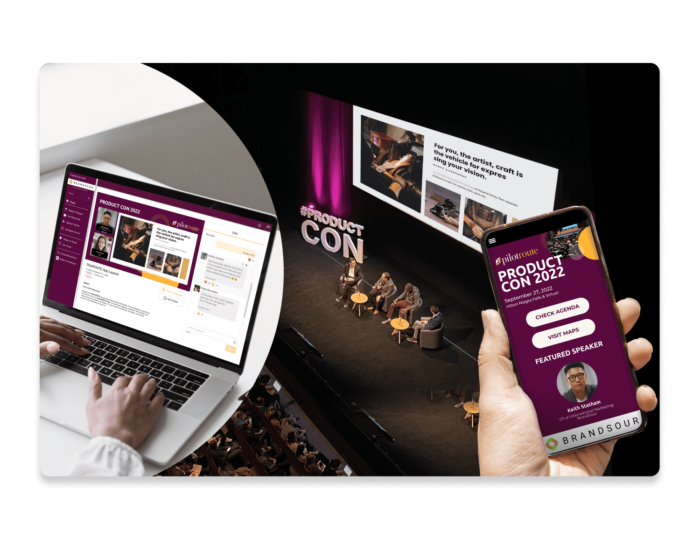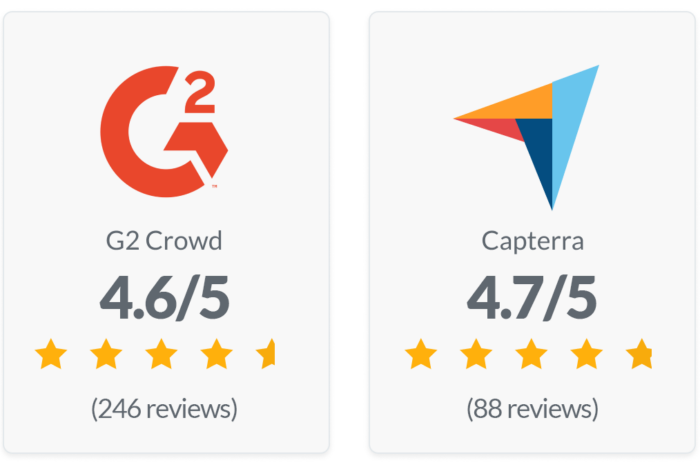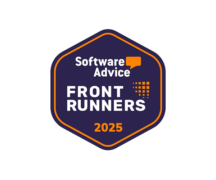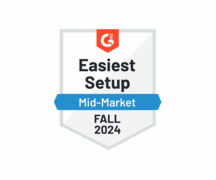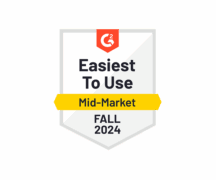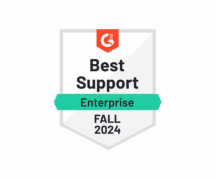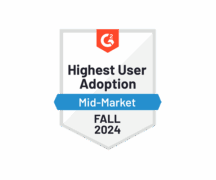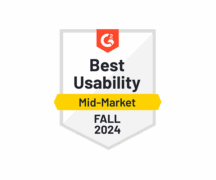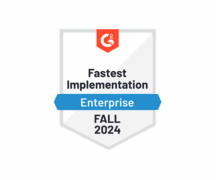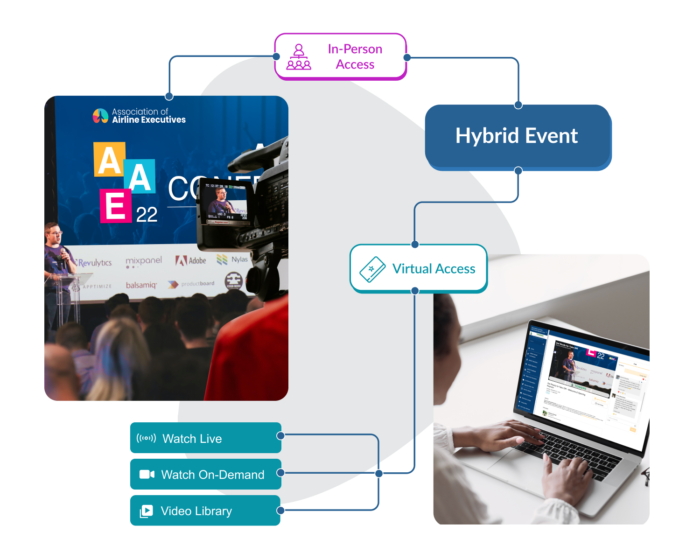
The Most Flexible Hybrid Events Solution
Hybrid meetings and events are not one-size-fits-all, but the EventMobi virtual and hybrid events solution lets you design and deliver any configuration including:
- Simultaneous Live Hybrid: Offer in-person & virtual sessions at the same time
- Extended Access Hybrid: Offer recordings of your in-person sessions on-demand in your virtual event space
- Asynchronous Hybrid: Run in-person and virtual sessions on different days
Design The Best Hybrid Conference Experience
The EventMobi Hybrid Events Platform is the only advanced solution that is both affordable and easy to use. Learn more about the hybrid event benefits you’ll get with EventMobi:
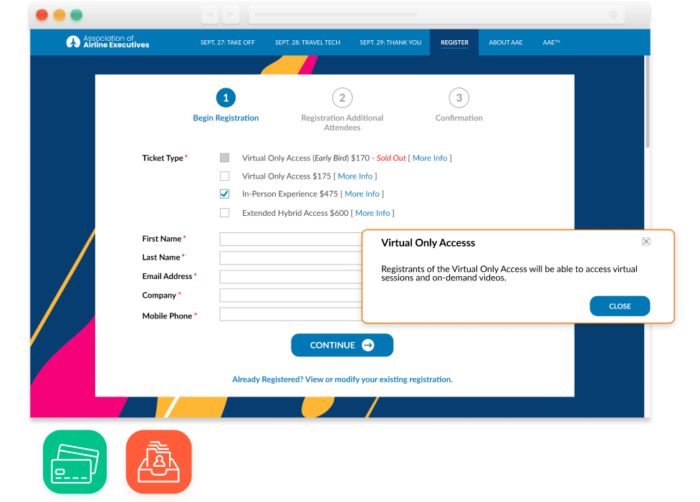
Promote Your Hybrid Event for Maximum Reach
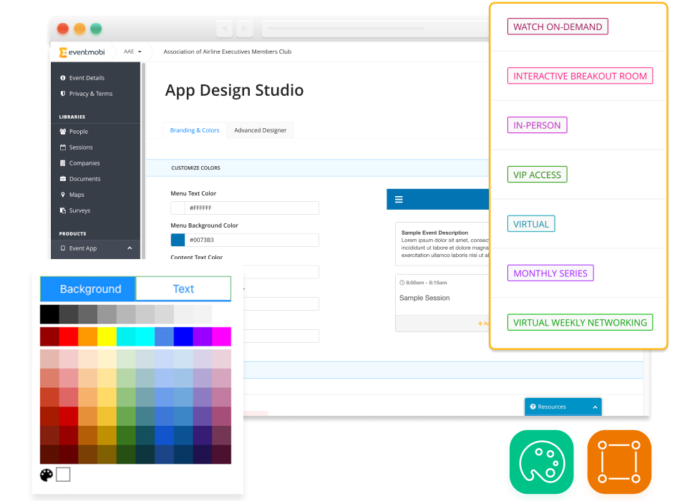
Manage Everything Using a Single Platform
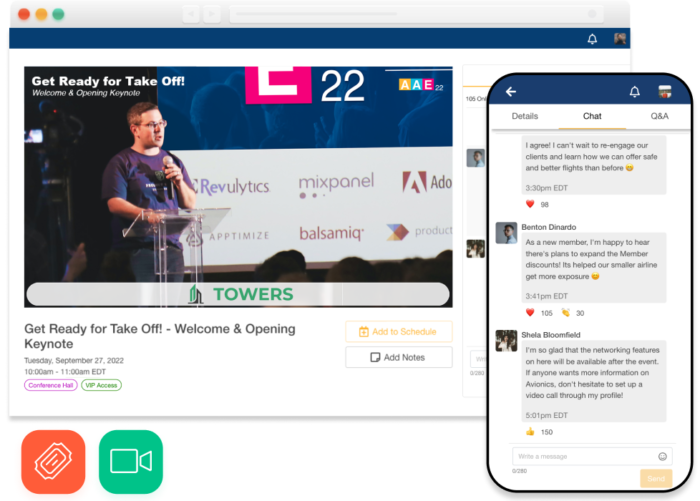
Create Unique and Shared Attendee Experiences
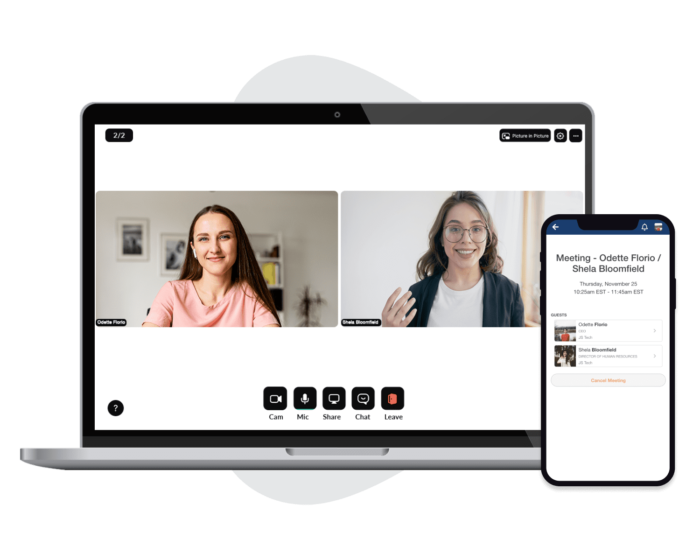
Help Your Audiences Make Valuable New Connections
Facilitate networking for both attendee types with features that make it easy to connect in-person and online.
- Attendees, speakers and sponsors can create robust profiles with self-edit links
- Schedule meetings with in-person and virtual Appointment Booking
- Connect with Private Chat and Group Discussions
- Set up 1:1 Video Meetings or meet in groups with Interactive Breakout Rooms
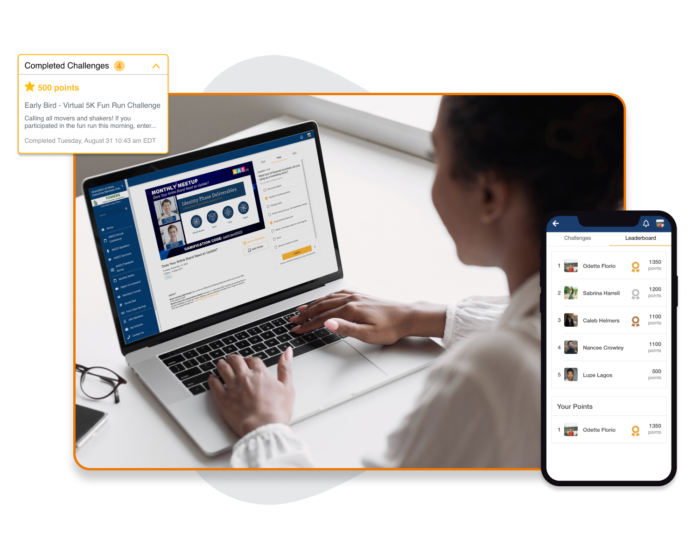
Keep In-Person and Remote Attendees Engaged
Entertain and engage your audience with the most comprehensive feature set of any hybrid conference platform.
- Encourage all attendees to participate in real-time with Q&A, Live Polls and Live Session Chat
- Create gamification challenges with a shared leaderboard
- Create dedicated Video libraries for your event, organization, and sponsor content
- Gather feedback from both sides with Surveys
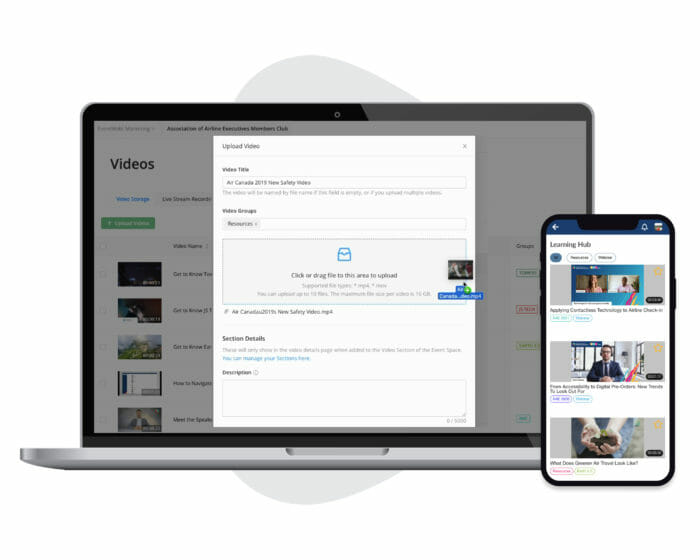
Leave no Attendee Behind With Video Libraries
When a simultaneous live hybrid event isn’t right for you, EventMobi’s Video Library feature offers a powerful and cost effective way to engage your in-person and remote audiences before, during and after your event.
- Host all your videos in your event platform
- Upload session recordings and video files with two clicks
- Offer a channel-style experience with related content & comments
- Help sponsors better engage attendees
- Create a year-round learning hub with ticketed access
- Measure audience engagement from a single dashboard
Reach a Larger Audience
Easily scale your hybrid event production and set up as many concurrent sessions as you need; with EventMobi, your global audience can build their personalized agenda with ease.
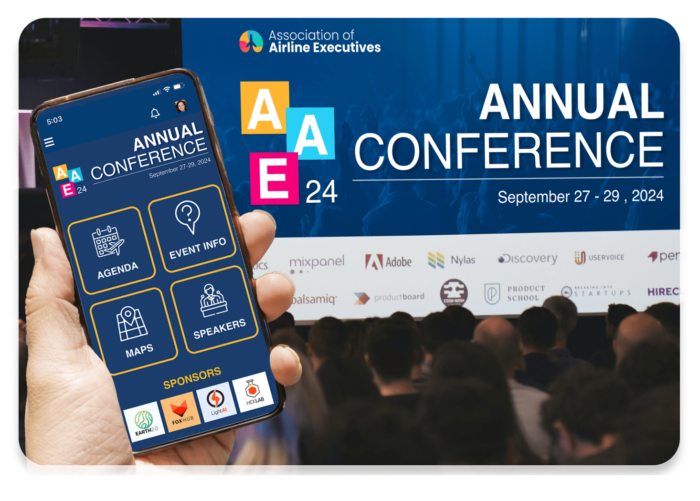
In-Person Sessions
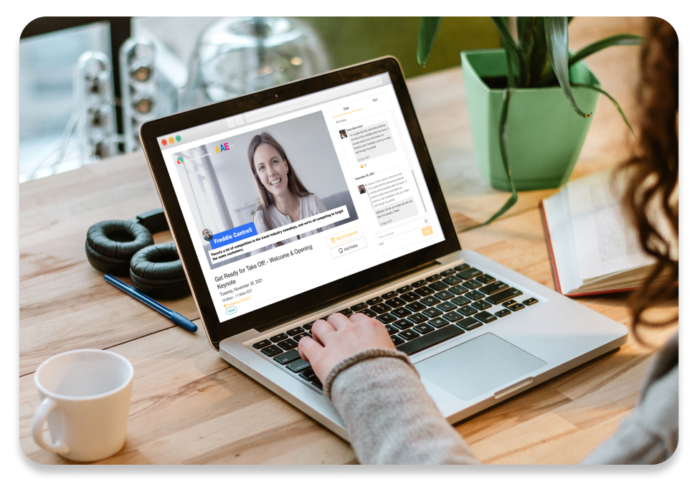
Virtual Sessions
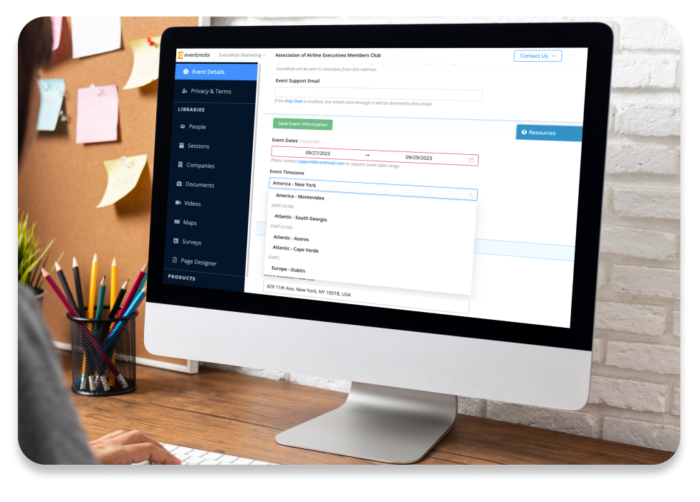
Attendee Time Zones
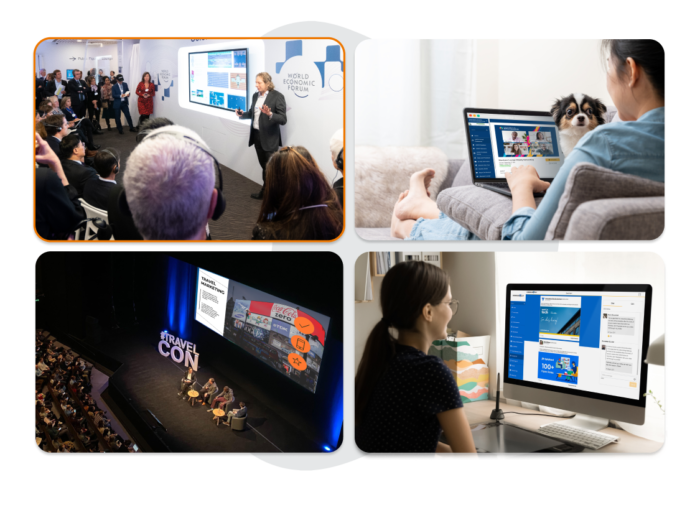
From Hybrid Seminars to Hybrid Conferences, We’ve Got You Covered
Wondering if the latest hybrid events trends are right for you? Event Organizers use EventMobi to design virtual and hybrid meetings including:
- User Conference
- Partner Conference
- Product Launch
- Road Show
- Company Retreat
- Sales Kick-Off
- Board Meeting
- Annual Conference
- Trade Show
- AGM
Why Our Customers Love the EventMobi Hybrid Conference Platform
“Having the combination of virtual and in-person in a hybrid model, it’s amazing how it all comes together in one platform, delivered through one team.”
Chris Rasmussen
CEO, Peerscale
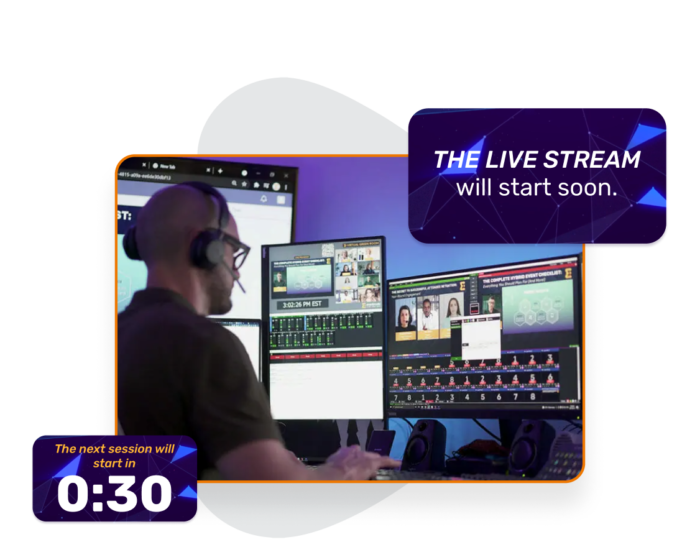
Meet Your GoLive! Production Team
EventMobi’s GoLive! Event Production team will be on hand to help you plan and host a successful hybrid event. Your team of professionals will:
- Manage all aspects of live streaming for your hybrid event
- Transform your in-person speaker sessions into engaging live streams for virtual attendees
- Work hand-in-hand with your onsite AV team
- Available to troubleshoot any technical hiccups during the event
- Provide recordings of live stream sessions post-event for your on-demand content library
All the Features You Need to Run Your Best Hybrid Meeting








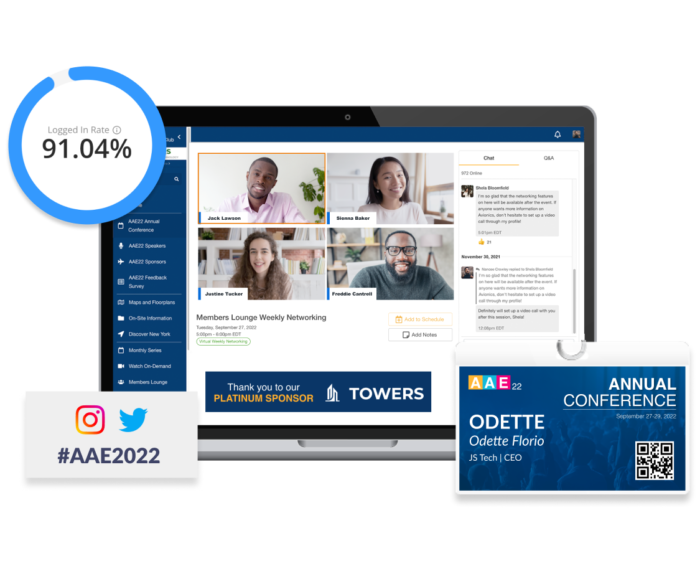
Keep Your Audience Engaged In-Between Events
Craft a hybrid events strategy that keeps your community engaged before and after your conference is over, with an ongoing series of virtual sessions, Video libraries, Group Discussions, Live Session Chat and more.
- Increase brand loyalty
- Enhance revenue opportunities
- Elevate learning & development impact
- Deepen member/attendee engagement

The Complete Hybrid Event Checklist
The future of events is hybrid, and planners are arming themselves with the tools they need to hit the ground running.
Sign up now to access EventMobi’s Complete Hybrid Event Checklist, a free template ready for you to copy and use as you plan your next hybrid event.
What Our Customers Say
Create the best event experience with the most trusted event technology
Everything You Need To Engage Your Audience at In-Person, Virtual and Hybrid Meetings
Developed with 15+ years of event experience, EventMobi’s hybrid event solution includes all of the onsite and virtual technology and support services you need to inform, engage and connect your attendees. Ready to learn more about the best hybrid event platform? Fill out the form below!
Book My Demo
Virtual Events Platform
EventMobi’s professionally managed, end-to-end online events solution has everything you need design personalized attendee experiences, online & in-person.

EventMobi Studio
Fully integrated with EventMobi’s Event Platform, EventMobi Studio is the perfect DIY solution for creating on-brand and on-budget live stream broadcasts.

